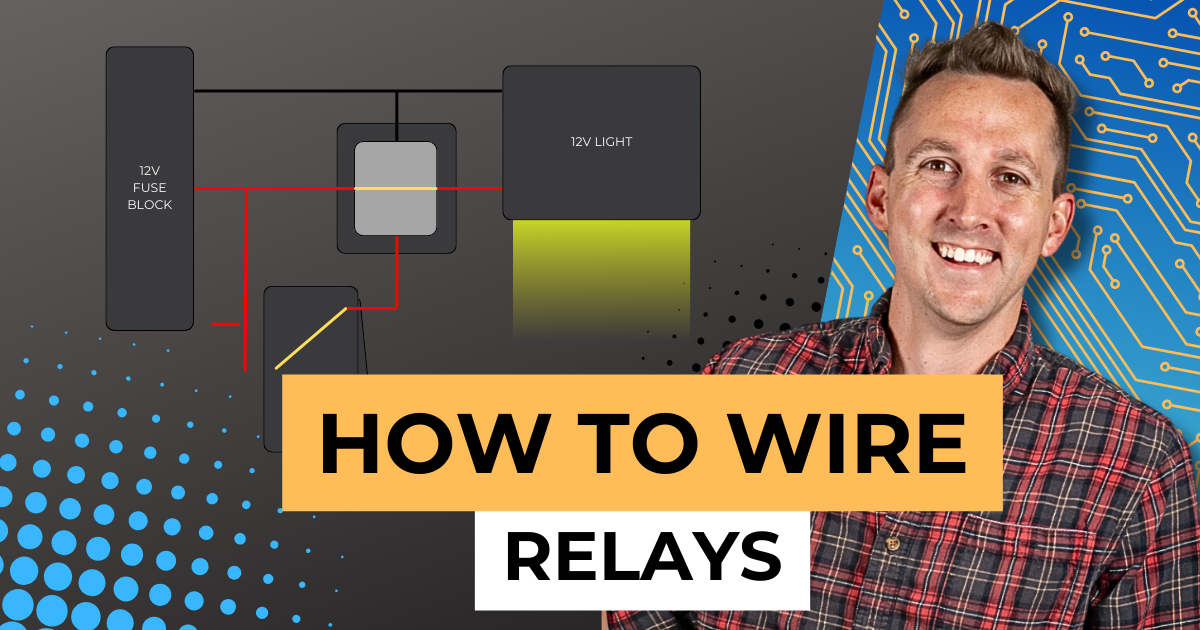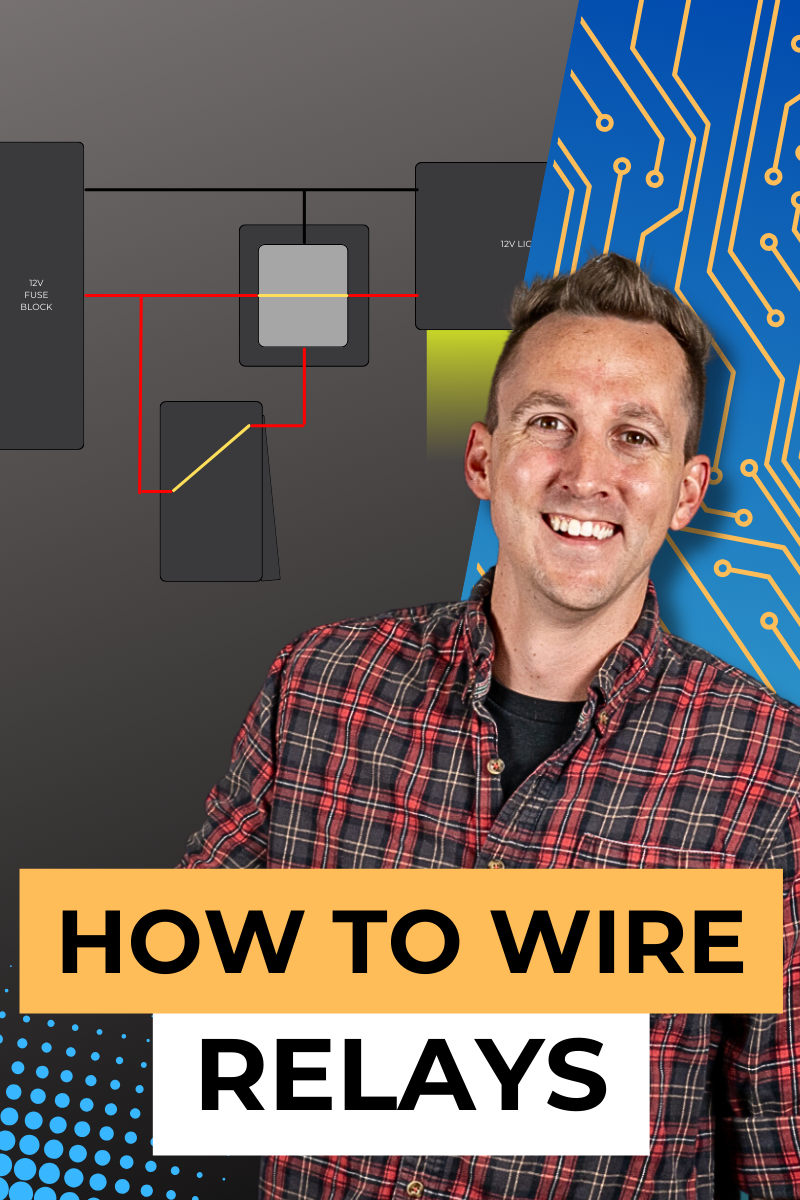If you have an electrical load that’s quite a ways from your fuse block and you want to control it with a switch from a long distance, you’ll need a relay. In this guide, we’ll walk you through the purpose of relays, how to wire them, and even how to use Bluetooth-controlled relays for a more advanced setup.

How to Wire Relays – VIDEO
What is a Relay and Why Use One?
A relay is an electrically controlled switch that allows a low-power circuit to control a higher-powered one. This is useful when:
- Your load is located far from your switch, reducing the need for heavy-gauge wiring.
- Your switch cannot handle the high current required by the load.
- You want to control a high-powered device, such as off-road lighting or a winch, with a low-powered toggle switch.
Components You’ll Need
Before wiring your relay, ensure you have the following components:
Wiring a Relay: Step-by-Step Guide
- Powering the Relay:
- Understanding Relay Functionality:
- Wiring Diagram Breakdown:
- Voltage Drop Considerations:
- Running long wires directly from a switch to a load can cause voltage drop and require thicker, more expensive wire.
- Using a relay allows you to run smaller gauge wire for the switch while keeping high-power wires short.
Using a Bluetooth Relay for Wireless Control
If you want to eliminate physical wiring for the switch, a Bluetooth relay is a great alternative. Instead of running wires from a switch to the relay, you can control the circuit wirelessly.
Best Bluetooth Relay Option: Victron Smart Battery Protect
The Victron Smart Battery Protect is a trusted option. It functions similarly to a relay but can be controlled via the Victron Connect app.
Wiring a Bluetooth Relay:
- Connect power from the fuse block to the Smart Battery Protect.
- Run the negative connection to complete the circuit.
- Use the Victron Connect app to toggle the circuit on and off wirelessly.

Advantages of a Bluetooth Relay:
- No need for a physical switch.
- No additional wiring required.
- Can handle up to 220 amps, making it suitable for high-power applications.
- Ideal for light loads, such as water pumps or lighting.
For those looking for a more comprehensive, centralized control system, the REDARC TVMS system provides additional functionality, including touch-screen and app-based control. We’ll cover that in an upcoming post!
Final Thoughts
Now that you understand how to wire a relay—both traditional and Bluetooth versions—you can implement this in your off-grid electrical system. Whether you’re managing lighting, high-power accessories, or just looking for a cleaner, more efficient way to control circuits, relays are an essential tool.


